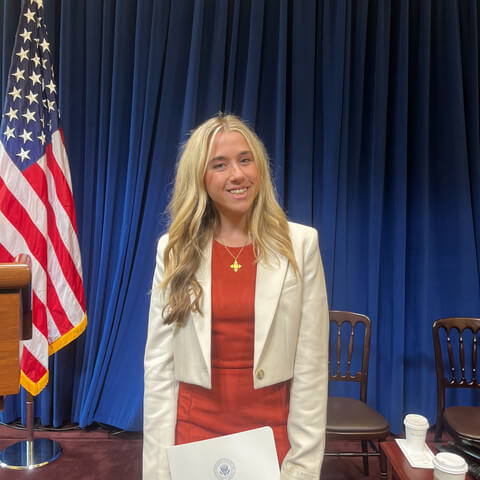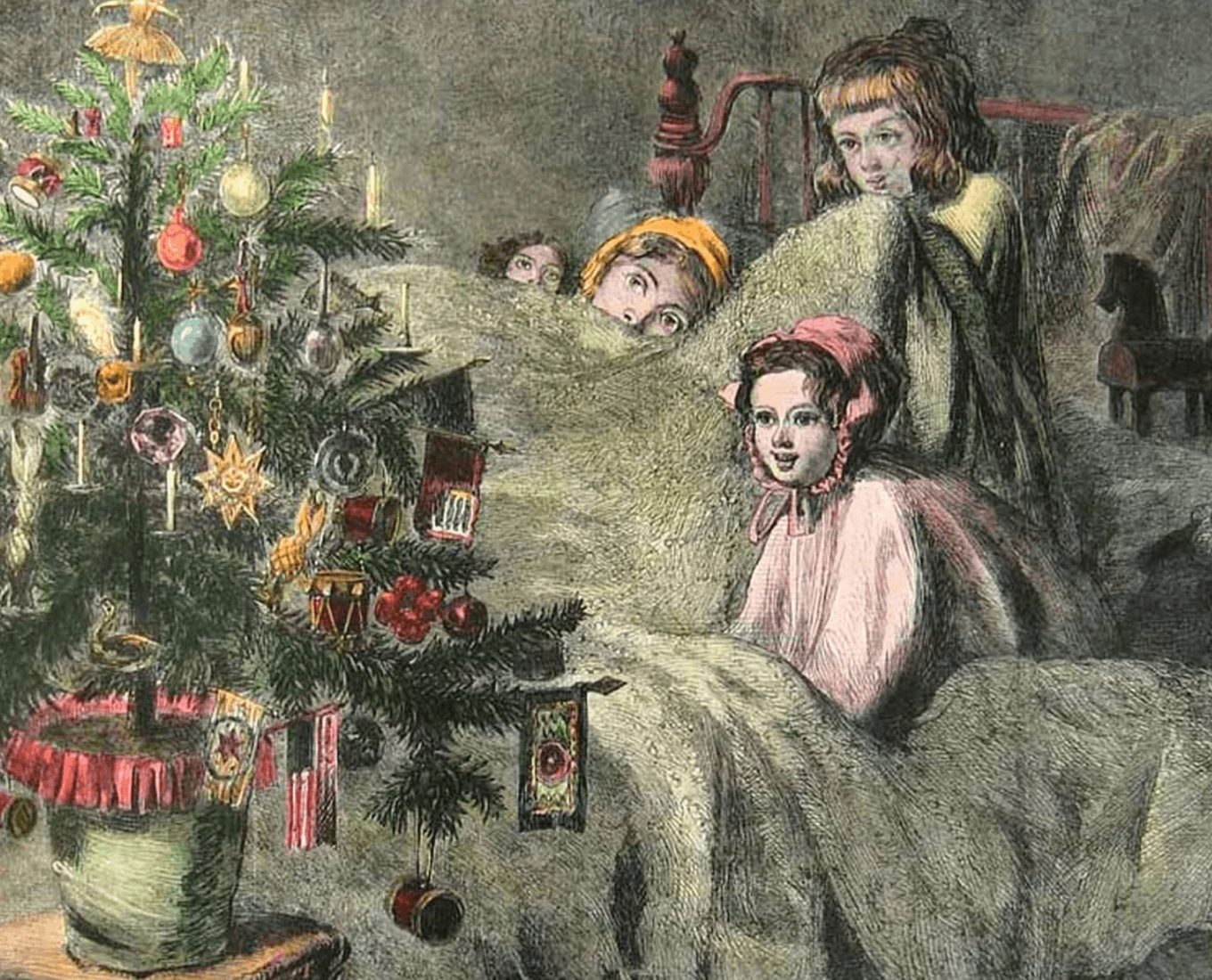Caroline Hanson ’27 says higher education isn’t utilizing their best experts when it comes to student mental health — the students themselves: “If you’re going to talk about youth mental health, why would you not listen to the youth?”
A psychology major from Lowell, Massachusetts, Hanson is chair of the new Coalition for Student Wellbeing, (C4SW) a nonprofit run by students across the U.S. who desire to help colleges and universities better understand young adult mental health.
“We’re a bridge between students and administration,” Hanson said. “People who are making these decisions for a college should hear the student voice and opinion, and we’re able to provide that.”
Assembling a team
Following her own struggles, Hanson has been an advocate for student mental health support, speaking with multiple organizations, such as the Mass Association Mental Health. She also served on the youth council for the Mary Christie Institute, which focuses specifically on higher education.
Through her work with this and other organizations, Hanson and other students “realized an opportunity existed to highlight student voices and involve students in these spaces where they should be considered valuable stakeholders,” she said. This inspired her to help start C4SW in August 2024, to ensure that her generation had a voice in their own care. She noted the group was launched due to the support of the nonprofit Mary Christie Institute.
“A college student’s mental health is intersected with so many other aspects of their life, so we felt that wellbeing is so much more representative of their life and the message we’re hoping to send,” she said.
Using her network of contacts built through her advocacy work, Hanson assembled a group of students and experts who can act as consultants and provide input to colleges and universities.
“It works like advising in a way,” she said. “If schools have a question for us, they reach out and we give them our thoughts and opinions.”
The organization also works with students and faculty on white papers discussing policy changes that better inform colleges and universities’ approach to student mental health, and maintains a blog detailing student perspectives. Currently, the coalition has about 20 to 25 student members, or youth voices, as Hanson referred to them.
The coalition is still in what she referred to as a “slow launch,” but she expects it to be fully up and running by mid-2025.
Hanson noted that while the students are experts in their own experience, they don’t claim to have all the answers: “We recognize that we’re still college students and there’s a lot we don’t know.” The coalition is also supported by an advisory board composed of mental health professionals.
Speaking on a national stage
“Having worked with different mental health organizations and through this work you build a really unique network of people,” she said. “I’ve done this work independently and for organizations, so I have had advocacy opportunities.”
So far, the biggest of these was speaking at the White House in September 2024. Hanson was contacted by the White House Office of Public Engagement to take part in a Sept. 16 round table discussion on mental health, treatment, and suicide prevention across the United States.



